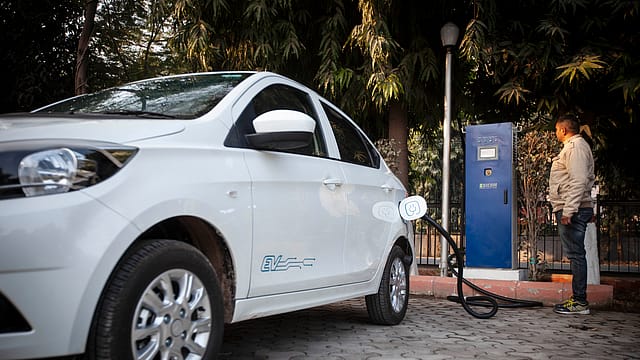EV sales in India grew 20% in FY20
ADVERTISEMENT

Industry body Society of Manufacturers of Electric Vehicles (SMEV) on Monday said that India’s EV industry sold 1,56,000 electric vehicles in FY20, registering a growth of 20% over a year when 130,000 units were sold.
The growth, SMEV said, has largely come on the back of two-wheeler sales. The industry sold 152,000 two-wheelers, 3,400 cars and 600 buses. Experts believe that due to the outbreak of the new coronavirus, there could be a dent in the growth momentum of the segment.
“The EV industry is taking shape and we believe that despite Covid-19, the FY21 will be a defining year for all the EV segments. While the EV industry is surely going to face the brunt of Covid-19 like any other automotive business, clearer skies and cleaner air in even the worst-polluted cities is certainly leaving a permanent impression in the minds of customers about how they can breathe easy and remain healthy if the society moves towards E-Mobility,” said Sohinder Gill, director general, SMEV.
A recent Harvard study shows that PM2.5 pollution can multiply the risk of Covid-19 deaths. “This is a stark reality of how the pollutants of the IC vehicles can harm us and is certainly going to make the policymakers think on how to accelerate the EV growth,” he said.
The two-wheeler segment is the best way that the EV adoption can increase. Of the total sold in FY20, 97% were electric scooters, and motorcycles and electric cycles made up the rest. This is because low-speed scooters (max speed at 25km/hr) do not need registration with transport authorities.
December 2025
The annual Fortune 500 India list, the definitive compendium of corporate performance, is out. This year, the cumulative revenue of the Fortune 500 India companies has breached $2 trillion for the first time. Plus, find out which are the Best B-schools in India.
“Few experiments like E2Ws being sold without the batteries and customer paying for the batteries as a fuel, e-commerce companies realising the economic benefits of EVs and converting their fleets, e-carts becoming a convenient and cost-effective means of short distance logistics, e-taxis fleets beginning to make money due to lower operating costs may bring around the inflection point in the EV industry in FY22,” Gill adds.
When it comes to the electric four-wheeler segment, 3,400 units were sold compared to 3,600 units in the previous fiscal year. SMEV says that the decrease in numbers is due to lack of bulk purchase of e-cars in FY20 and discontinuation of one of the leading car models. According to the industry body, the acceptability of electric cars in the premium segment in the second half of the year was a positive signal of a quantum jump of a much higher volume of e-cars in FY21. “The E-Taxi segment is also beginning to get some traction, though the range of e-cars and lack of charging spots in enough density is a deterrent in the growth of e-taxi segment. e-buses went into a Yo-Yo of big commitments by the state governments not translating into purchases,” it said.
Gill feels that with the right impetus by the government and the industry, the EV industry can spring back faster than the ailing internal-combustion-engine vehicles segment. “A pertinent factor that may work in favour of electronic two-wheelers post-Covid-19 would be the choice of switching over from crowded mass transport to the sensibly priced electric two-wheelers with almost the same cost of commuting as of public transport,” he said.
